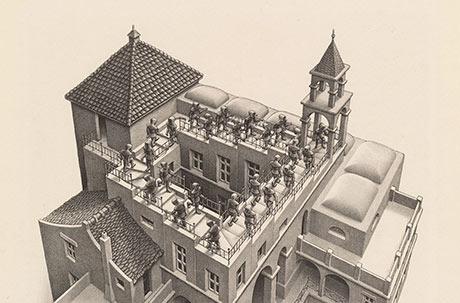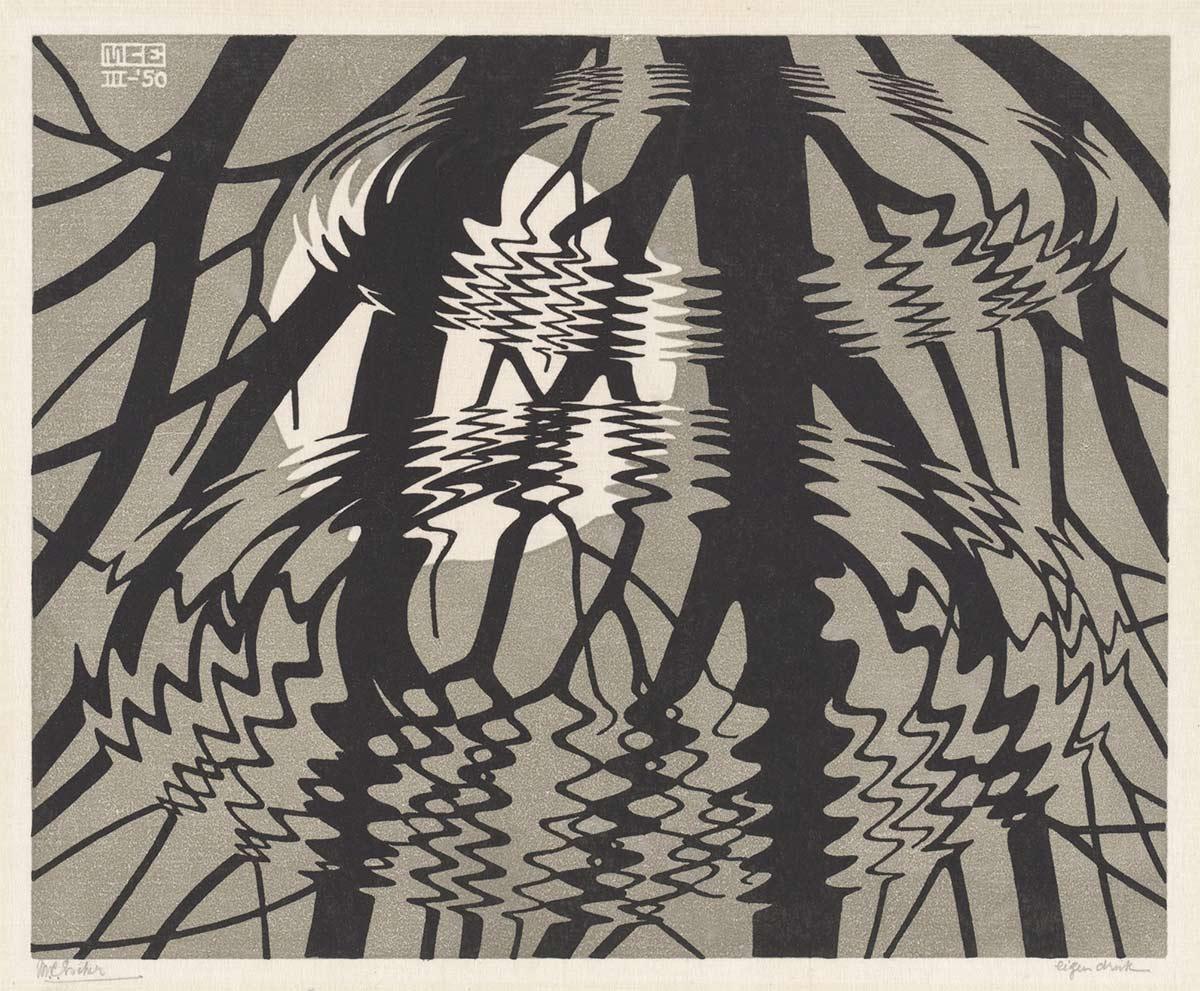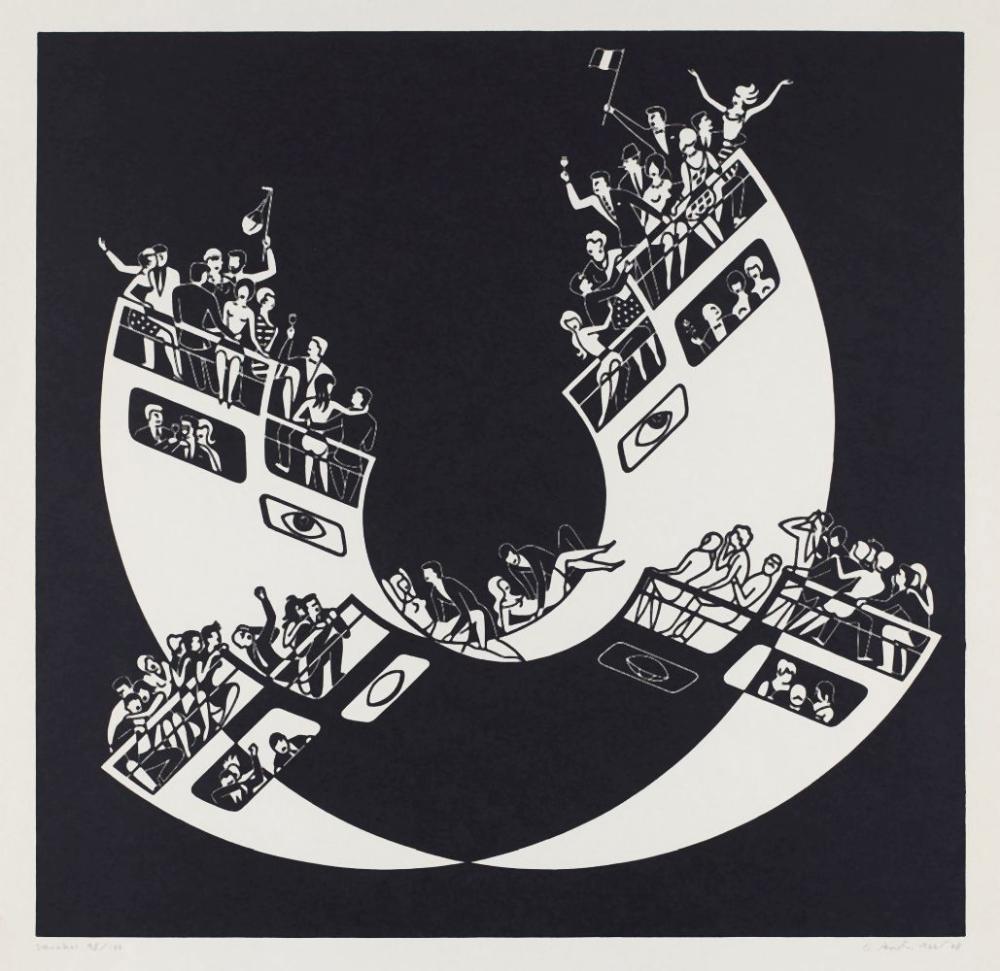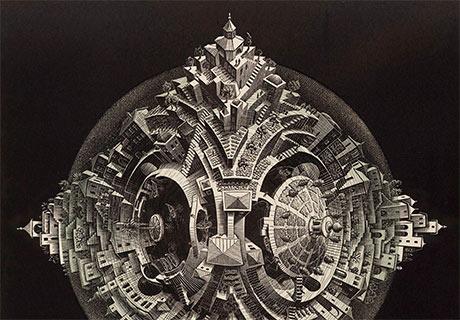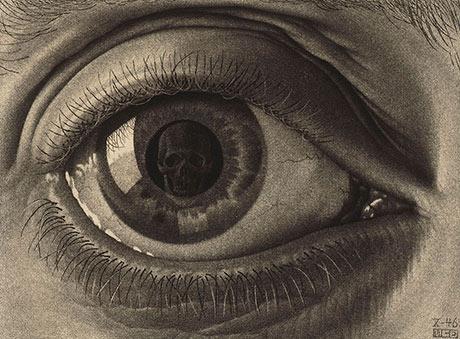History
Although the linocut is only just over a hundred years old (making it one of the most recent printmaking techniques), it is without a doubt one of the most commonly used techniques. It is a relatively easy technique, and the material is inexpensive. Other printmaking techniques are used mainly by professionals or serious amateurs, while nearly everyone once made a linocut at school. Linocuts were introduced into schools in the 1920s, as a means of self-expression for young children. It was its role in education that for a long time prevented the linocut from being taken seriously as a graphic medium.
Linoleum was developed in Britain between 1850 and 1875. The linocut technique was first used in arts and crafts education in the late nineteenth century. Erich Heckel made the first known linocut in 1903. In 1905 he and Ernst Ludwig Kirchner, Fritz Bleyl and Karl Schmidt-Rottluff founded Die Brücke, an art movement. Later members included Emil Nolde, Max Pechstein and Otto Mueller. The artists of Die Brücke used simplified and often distorted shapes that surprised viewers and often elicited an emotional response. The linocut and woodcut were ideal techniques for this.
Other great artists who worked with the technique include Pablo Picasso, Henri Matisse, Wassily Kandinsky, Markus Lüpertz, Joan Miró, Marc Chagall, Georg Baselitz, Jörg Immendorff and, in the Netherlands, Dick Ket, Corneille and Klaas Gubbels. And M.C. Escher, of course. With their bold, unconventional approach to the technique, Baselitz and Immendorf played a crucial role in ridding the linocut of its handicraft image.
Gerd Arntz, Escher’s friend and fellow board member of De Grafische (an association for the promotion of the graphic arts, founded in 1912), was a printmaker who used the linocut technique throughout his career. He was using it in the 1920s for his isotypes, and after the Second World War he continued using it in his non-commissioned work, his book illustrations and his work for the national statistics office in The Hague.
